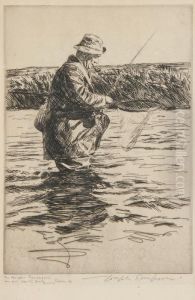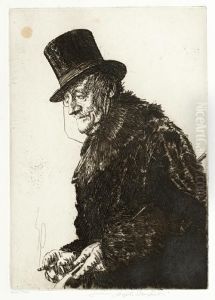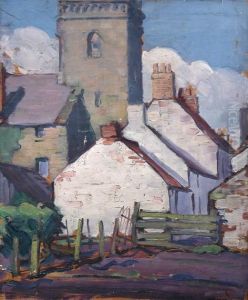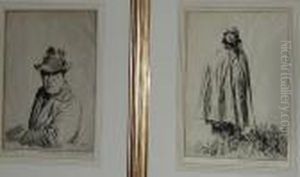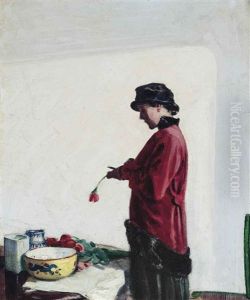Joseph Simpson Paintings
Joseph Simpson was a British painter and etcher, known for his portraits and sporting scenes. Born in Carlisle, Cumberland, in 1879, Simpson showed an early interest in art, leading him to pursue studies at the Carlisle School of Art before moving on to the Antwerp Academy and then the Royal Academy Schools in London. His education provided him with a solid foundation in both the technical and theoretical aspects of art, allowing him to develop a distinctive style that combined realism with a certain lyrical quality.
Throughout his career, Simpson enjoyed considerable success as a portrait artist, capturing the likenesses of various notable figures of his time, including politicians, athletes, and fellow artists. His portraits are celebrated for their insightful depiction of the subject's character and mood, often achieved through subtle use of light and shadow. Simpson's work in sporting scenes, particularly related to horse racing and boxing, is equally significant. These works not only showcase his skill in rendering dynamic movement and tension but also offer a glimpse into the social and cultural interests of the early 20th century Britain.
Aside from his work as a painter, Simpson was also accomplished in the art of etching, a technique that allowed him to explore different textures and shades with great precision. His etchings, much like his paintings, are characterized by their attention to detail and ability to convey atmosphere and emotion.
Despite his achievements, Joseph Simpson remained relatively modest about his talents. He was a member of various art societies, including the Royal Society of Portrait Painters, but he often shunned the limelight, preferring to let his work speak for itself. Simpson's legacy is that of a versatile artist who could capture both the essence of individual character and the vibrancy of British life during his time. He passed away in 1939, leaving behind a body of work that continues to be admired for its technical skill and emotional depth.

